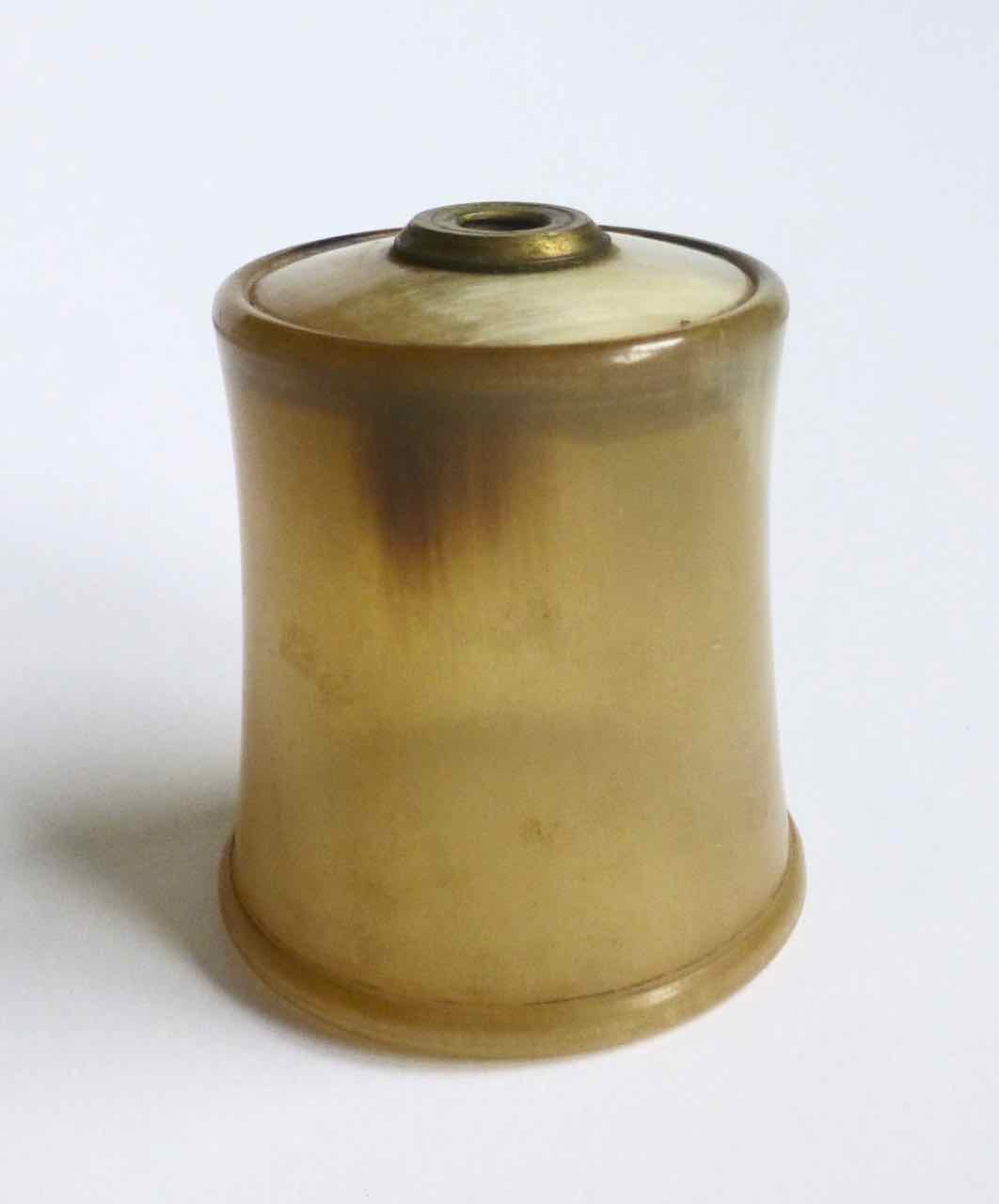Surgery |
||
Cupping glass (08), horn |
||
Suction cup made of horn in the shape of a tumbler. Height 4.8 cm, Ø bottom 3.6 cm, Ø lip 4.6 cm. Origin: Olathe, Kansas, United States.
A similar glass from the 4th century AD. was found in Worms: "The use of cupping heads has been handed down since antiquity, and for better blood circulation, a heated cupping cup was placed over a small skin suture, so that it sucked and drew out the blood." Cupping heads are known and made of metal, ceramics, bone, horn and glass The figure of Lüneburg shows just how similar the shape of the cupping glasses has been over a long period of time: for there is an externally absolutely identical piece from Roman Worms, which becomes one The small interior volume of the cupping glasses predestined it even for use as a reliquary container until the 19th century, as some examples from relevant find correlations prove.As with the small vials, glass cupping heads are also a single object sc to date, since the function predated the form for centuries "(Peter Steppuhn, in: Glass Culture in Lower Saxony, 2003, 14 p.171-175).
A similarly shaped cup made of light green, bubble glass from the 16./17. Century was also found in Lüneburg (City Hall, Court Arbor - West Wall / Kloake). H max. 4.4 cm; Ø bottom 4.0 cm; Ø lip 3,4 cm; Gd. 0.7 mm; Gd. Lip 2.9 mm.
The bloody cupping as emergency therapy "The time of need / when one must leave / when one can not wait any longer: than when a child has pleuresin / side stitch / and is so young / which one does not let him / her / it should be allowed to let him Köpffe and the scarificiren instead of the Aderlassung "(Petrus of the Stylle, Balbierer and Wundtartzt, Handbuch der Chirurgiae, Frankfurt am Mayn, 1611 p.245). Cupping heads, also called Laßköpfe, in baierischen space rather Loßkopf (ceramic, non-ferrous metal or glass) were in the early modern times as a remedies and health care often in use - the bronze rather in Germany, the glass rather in Italy: In Germany, small brass heads are used for this purpose, which are put on first, and then cut the skin with the cupping cup, which is of the same size as the leaves, and yet makes fifteen, sixteen small cuts in one go Italy has glassy, and much larger lass heads "(Johann Alexander von Brambilla, About the Inflammatory-Schwolst and their exits, Vienna 1786) p.458). |




